|
Summer Nights (Oh, those…)
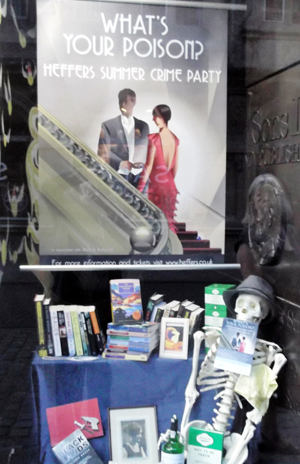
It was by common consent one of the
best ‘What’s Your Poison’ summer crime parties thrown by Heffers of Cambridge –
advertised with a very impressive window display – for many a year, even though
it broke with tradition and for the first time allowed writers to speak and read
from their work.
Of course cynics would say that thanks to the
‘poisonous’ cocktails provided, it could not have been that good if one could
remember it, but I do believe the large number of readers and writers who gathered
there amidst piles of tempting titles really did have a good time.
Among the noted authors performing from their works
were Professor Barry Forshaw, rising star Abir Mukherjee and a grizzled old
veteran who was clever enough not to stand under the ‘Second Hand’ sign.
 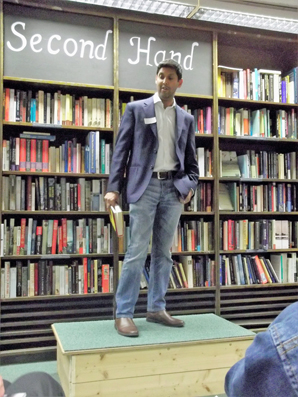 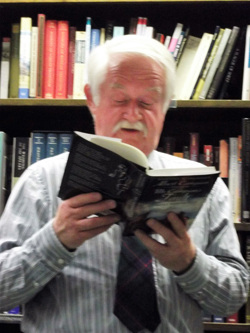
Set Texts
There are certain titles which should
be regarded as set texts in any historic study of crime fiction and most should
be familiar to readers of this column. There are some titles always cited in
the reference books which many readers will have heard of, but very few have
actually read. I am thinking of The
Mystery of the Hansom Cab by Fergus Hume, which was first privately
published in Australia in 1886 but went on to become a huge bestseller in the
UK and the USA, completely overshadowing the debut of a certain Sherlock
Holmes.
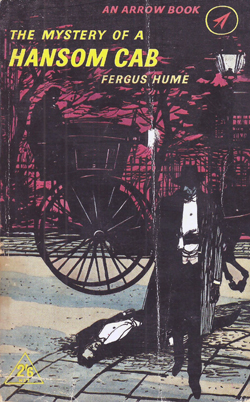
I am proud to say I tracked down a copy Hansom Cab some years ago and thoroughly
enjoyed it, but I have to admit I have never read The Leavenworth Case by Anna K. Green, which was first published in
America in 1878, and is recognised as the first detective novel written by a
woman, or at least the first detective novel not involving a detective with
extra-sensory perception. Now I have absolutely no excuse as the Detective
Story Club’s 1929 edition has just been reissued as a most attractive and very
reasonably priced (£9.99) hardback.
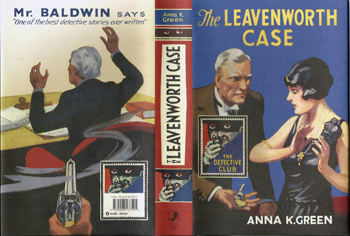
That Anna
Green, ‘the mother of detective fiction’, was a pioneer is not in question and
her novel was praised by Wilkie Collins in the 19th Century and
Agatha Christie in the 20th, not to mention by Prime Minister
Stanley Baldwin who called The Leavenworth Case ‘one of the best
detective stories ever written’.
And who am I to dispute Mr Baldwin?
Coming Up
Once again I am overwhelmed with
interesting crime novels rapidly coming over the horizon and I can do them
scant justice here as pressure of work, approaching deadlines from intransigent
publishers and a special offer on a cheeky Australian Rosé round at the local
garage, have left me little time to savour much in detail. However I
confidently flag up the following titles for your delectation.
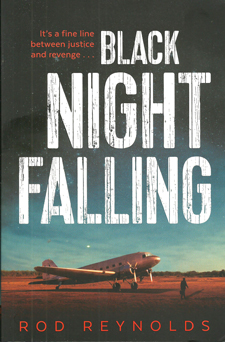
I met the very personable and disgracefully young Rod
Reynolds at one of Goldsboro Books’ fabulous Crime-in-the-Court parties just
before his first novel was published. Now time has flown and his second novel, Black
Night Falling is published this month by Faber. It is a direct follow
on from his debut, The Dark Inside and once again the setting is the southern states of America in the
1940s; solid noir territory you would
think, except done by a Brit. I wonder if Rod is a fan (as I am) of the works
of Charles Williams, and am determined to ask him the next time we collide at a
party.
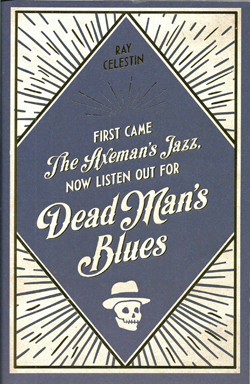
Another British writer going for an historical
American setting – and making rather a good fist of it – is Ray Celestin whose
award-winning The Axeman’s Jazz caused such a justified stir two years ago.
With Dead Man’s Blues, luxuriously
published this month by Mantle, he moves his story, and protagonist Louis
Armstrong, to Chicago in 1928 at the very time when jazz musicians were
migrating north from New Orleans. I have sadly not had enough time to make any
serious inroads into the book, but as Louis Armstrong is one of my musical
idols (up there with B.B. King, Hendrix and Ellington), I will definitely make
time to enjoy this one. From the fraction I have read so far, I think it may
turn out to be even better than Axeman’s Jazz. In olden days, crime
reviewers would have said something along the lines of ‘Jumps the second novel
hurdle with ease’ but I think something like ‘Takes the second chorus with
gusto and swing’ would be more appropriate.
 
When one thinks of Italian crime fiction, one’s mind
tends to wander (at least mine does) to warm days filled with good food and
frequent wine and settings such as Florence, Rome, Venice, Naples or Sicily.
There are, however, other interesting parts of Italy and Antonio Manzini has
provided a treat by setting his crime fiction in the small Alpine town of Aosta
(up near the Mont Blanc tunnel to save you Googling).
A Cold Death, published by 4th
Estate this month, is the second translated case for Manzini’s interesting and
very cynical detective hero, Deputy Police Chief Rocco Schiavone, who has been
‘exiled’ from his beloved Rome to the chilly Alps. I am confident that Manzini and Schiavone could just be la prossima cosa grande as I think they
say in Italy.
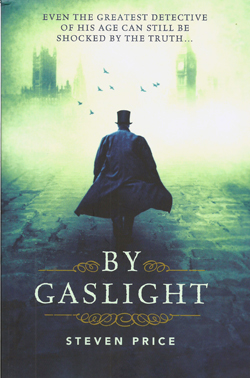
The next big thing in a literal sense comes from
publisher Oneworld in September when Canadian poet Steven Price’s By
Gaslight weighs in at over 730 pages and 984 grams, which is 2lbs 2oz
in old money.
It is epic is scope as well as size, ranging across
the 19th Century but centred mainly on a fog-bound London in 1885
when one might expect to find a famous detective – and one does, the famous
William Pinkerton (well, actually the son of the more famous Allan Pinkerton).
It is not an easy read as Mr Price uses his poet’s prerogative, or perhaps that
should be affectation, by refusing to use inverted commas or any speech marks
throughout his 730+ pages.
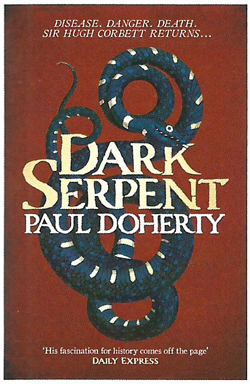
Nipping back from the 19th to the 14th
Century is one of the fun things one can do with ease in crime fiction and
loyal readers will know they can always rely on Paul Doherty for an interesting
slice of history sandwiched between the mayhem and skullduggery, although
mayhem and skullduggery is history, isn’t it?
Dark Serpent, published by Headline,
is the eighteenth in Paul Doherty’s Sir Hugh Corbett series. Set in 1311 during
the reign of Edward II, Sir Hugh tackles a case of murder done with a rather
special knife, but that’s only half the problem. The victim is a former patient
in a leper hospital and Corbett faces dangers other than those from sharp
blades.
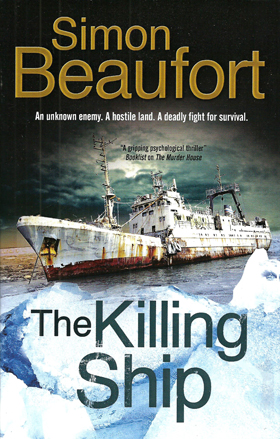
Susanna Gregory is another name closely associated with medieval
mysteries, as is Simon Beaufort, the pseudonym used when she writes in partnership
with Beau Riffenburgh. In recent years, the Simon Beaufort name has been used
for books in more modern periods and very different settings. The
Killing Ship, out now from Severn House, is an adventure thriller
in the tradition of Hammond Innes or Alistair MacLean, set on remote
Livingstone Island in the South Shetlands (Antarctica if you have to Google),
where a party of scientists are going about their peaceful scientific business
when they are suddenly and violently attacked by the piratical crew of an
illegal whaling ship.
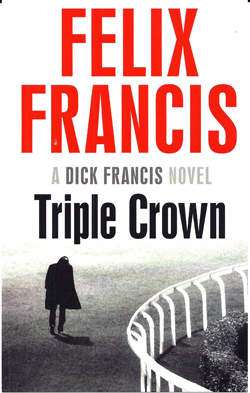
Late summer would not be late summer without the
traditional launch party for the new Dick Francis and Dick’s son Felix is doing
a first rate job of keeping up the family tradition. Having written in
partnership with his late father, Felix has been riding solo (hardly a
horse-racing term, I know) for some years now and his latest is Triple
Crown which gallops into the final straight (is that better?) from new
publisher Simon & Schuster on 22nd September.
It is surely only a matter of time before Felix
follows another family tradition and becomes Chairman of the Crime Writers’
Association, as his father was in 1973-74.
Better To Give
Whilst I am fairly sceptical of the plethora of awards being dished out for crime fiction, it is always good to witness ones which are awarded to aspiring crime writers, as I did the other day at Essex University.

Crime writer Jim Kelly – who lives in and writes about the Fen country of west Norfolk – and BBC Radio Essex’s Dave Monk were doing the honours, announcing three winners of the crime short story competition run during this year’s Essex Book Festival.
I have not yet been able to read any of the entries, which came not just from Essex but as far afield as America and Japan, but I hope to soon. I have it on good authority (Jim Kelly’s) that the three prize-winning entries are well-worth a look.
|
|
Revival Day
Murder for Christmas by Francis Duncan was the surprise hit of 2015 with sales that staggered everyone on the crime scene, although the timing of the reissue (November) and its wonderfully festive cover made it the ideal stocking-filler present. The big surprise was that no one really seemed to know who ‘Francis Duncan’ was.
We do now. Francis Duncan was the pen-name of William Underhill (1918-1988) who was born and lived in Bristol where he worked as a teacher. Posthumous interest in his work following the success of Murder for Christmas has resulted in four more of his detective novels being reissued, in very stylish covers, by the Vintage imprint, which is easily identified by its Death’s Head moth logo.
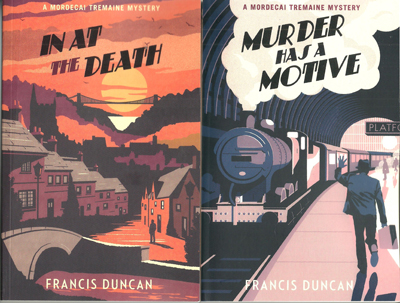
First published between 1947 and 1954, the new Vintage titles are In At the Death, Murder Has A Motive, Behold A fair Woman and So Pretty A Problem.
Talking of stocking-fillers, an ideal one, I would have thought, would be Ian Rankin’s novella The Travelling Man where Rankin gets to explore one of his favourite subjects: Robert Louis Stevenson.

Beautifully published by Head of Zeus, the only problem with The Travelling Man as a Christmas stocking filler is that it came out slightly too early, in July.

Not that I disapprove of people buying Christmas presents in good time, for I already have amassed quite a few which I will be stuffing into someone’s stocking come December.
In view of the turbulent post-Brexit economic times ahead and a misguided wager on England v. Iceland coupled with an each-way bet on the viewing figures for Top Gear,
I am afraid that my Christmas largesse will be limited this year. I have, however, amassed a considerable number
of ‘promotional items’ from publishers in recent weeks, ranging from model
cars, beer mats, whisky, whiskey and even a disposable camera which uses
something called film.
I am sure they all promote very good books just as I am sure they will all come in useful on Christmas Eve.
One book I will be certainly recommending this Christmas out of deference to my Yorkshire heritage – and nothing whatsoever to do with the small (almost infinitesimal) bottle of whisky which came with it, is A Death At Fountains Abbey by Antonia Hodgson, published by Hodder later this month.
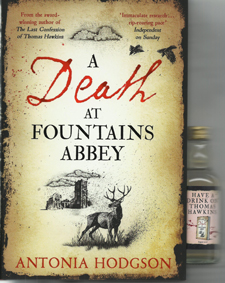
A Death At Fountains Abbey is set in Georgian Yorkshire in 1728 in the wake of the first great financial crash, the ‘South Sea Bubble’ – and Yorkshiremen do tend to have long memories when swindling brass is involved. (In fact there are certain parts of Yorkshire where the Emperor Claudius is still unforgiven for deflating the currency after the invasion of 43 AD). It features Antonia Hodgson’s reluctant sleuth Tom Hawkins who at one point ruminates that ‘London does not suffer from a lack of women’s legs’ and when a man so observant sends you a small jigger of whisky (did I mention it was small?) with the invitation to ‘Have A Drink on Thomas Hawkins’, why – it would be churlish to refuse.
Good Fellas
Despite what people say – or rather what people say about me – most crime writers are jolly good fellows.
There may be someone out there who has a bad word to say about South African Deon Meyer, but if there is, I have yet to meet them. I understand Deon is very proud of the latest accolade to come his way, so naturally I am pleased for him.

Deon has been chosen to write the 2017 ‘Gift Book’ to mark Crime and Thriller Book Week in Holland next June. For those not familiar with this tradition, the Gift Book is a free book given to anyone who, during the week, spends €12.5 on books in Dutch.
{For the benefit of the Brexit-voting reader who complained about last month’s column, I should explain that €12.5 is the equivalent, now, of roughly £8,000.}
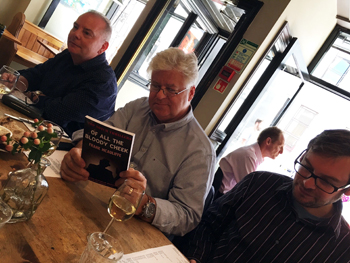
At a recent lunch in London, Canadian crime-maestro Linwood Barclay really was not totally bored with the conversational gambits of Shots Editor Mike Stotter and the Daily Telegraph’s Jake Kerridge – or if he was, he was too polite to say so. Rather Linwood was being an absolute sport by posing with one of the latest Top Notch Thrillers from Ostara Publishing – more on which, inevitably, later…
Linwood latest thriller is Far From True, published by Orion, who organised a very convivial lunch to which all the great and good, and Professor Barry Forshaw, were invited.

Personally I was delighted to discover that Orion have plans to publish (for the first time in the UK) Linwood’s ‘Zack Walker’ series of comic crime novels, which he wrote about ten years ago before turning, very successfully, to tense and scary thrillers.
Frank who?
No, until a year ago, I hadn’t heard of Frank McAuliffe either, though I should have. Lee Child, Lawrence block and my old chum Walter Satterthwait certainly had and it was Walter Satterthwait who urged me to find McAuliffe’s books and read them. I did, I laughed, and now I have edited them back into print for the first time in several decades and the first time ever in the UK for two titles.
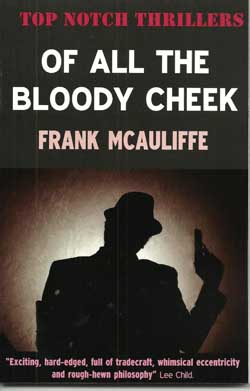  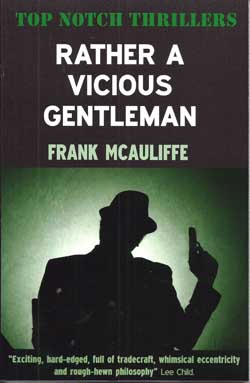
First published in the USA between 1965 and 1971, Of All The Bloody Cheek, Rather A Vicious Gentleman and For Murder I Charge More introduced Augustus Mandrell to an unsuspecting world and are now available as trade paperbacks and eBooks from Ostara Publishing (www.ostarapublishing.co.uk).
Mandrell is the founder (and sole employee) of Mandrell Limited, a bespoke company whose only business is murder. It was a business established during World War II, where Augustus Mandrell only ever fought for one side – his own. Totally self-reliant, ruthless, quick-witted and a master of disguises (the more ridiculous the better!), Mandrell is an assassin who is unhindered by fear, allegiances or scruples. He admits to only three weaknesses: money, exquisite Afghan carpets and beautiful women. Hespeaks several languages and can lie ineach of them and when he accepts a ‘commission’ he always collects his fee.
Mandrell has been described as a character ‘sired by Jack the Ripper out of Lizzie Borden’, a whimsical, fun-loving assassin and a modern-day Robin Hood dedicated to the bold acquisition of the wealth of the rich whilst firmly refusing to tamper with the financial status quo of the poor. He has also been called mystery fiction’s forgotten heroic villain.
When first published McAuliffe’s trio of novels detailing the ‘commissions’ of Augustus Mandrell in long inter-linked stories, were called ‘audacious and amusing’ by legendary American critic Anthony Boucher and legendary American mystery writer Lawrence Block remembers McAuliffe as ‘an artful writer with a commendably devious mind’.
Lee Child became a fan, discovering the books when he moved to live in the USA and rates them as ‘Exciting, hard-edged, full of tradecraft, whimsical eccentricity and rough-hewn philosophy.’
For a professional assassin, Mandrell certainly does have a nice line in what Lee calls ‘rough-hewn philosophy’, for example: ‘In what has popularly become known as the Cloak and Dagger business, the cloak serves but to get one past the door. It is the dagger that leaves the vivid memory…’
The books also have a distinctive narrative voice which I can only describe as if P.G.Wodehouse, on crack, had turned to the Dark Side. There are certainly lots of laughs, ranging from the blackly comic to outrageous Monty Python-esque levels and along the way, the various ‘commissions’ (or ‘hits’ or ‘contracts’) Mandrell undertakes cleverly subvert some of the established shibboleths of classic crime fiction, notably the locked-room mystery and (in several ways) the English country house murder. The narrative voice and the references to English stately homes convinced many American readers that the writer must be a sarcastic Brit, but in fact the author, apart from a childhood visit to Ireland, had never been to Europe.
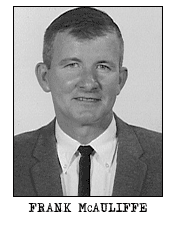
Malachi Francis (always Frank) McAuliffe (1926-1986) was born the eldest of eight children of Irish immigrants in New York. After service in the US Coast Guard and dropping out of college, he wrote his first novel, a Western, in 1957. In 1962 he moved his family to Ventura, California and worked for General Dynamics before becoming a civil servant, as a technical writer for the US Navy. He spent most of his spare time writing fiction and this, the third of his Mandrell books, For Murder I Charge More, won the Edgar Award from the Mystery Writers of America for best paperback original of 1971.
On accepting the award, McAuliffe began his response to the MWA with the words: ‘Ladies and gentlemen, you have impeccably good taste’ and Lawrence Block, who was in the audience at that MWA awards dinner, verifies the story.
That Man Alone
One fictional hero who certainly has not been forgotten by British readers and viewers is David Callan, as created in the 1960s by James Mitchell and who went on to feature in the hugely popular television series, films, in novels and dozens of short stories.
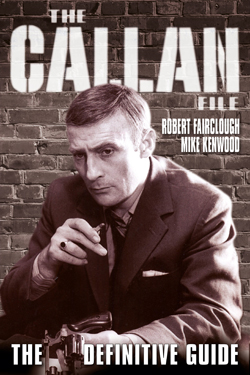
Next month sees publication of the long-awaited definitive guide to all things Callan, called appropriately enough The Callan File by Robert Fairclough and Mike Kenwood. I have been lucky enough to have been granted a sneak preview and can certainly say that it is an exhaustive piece of research into an iconic fictional character and all those involved in bringing him to life on the page and on screen. The authors have proved themselves so good at undercover work they probably deserve to be in a Red File themselves.
Callan fans will get the reference.
It Pays To Advertise
I was positively cheered when I saw, or thought I saw a promotional sign being erected at the recent Theakston’s Old Peculier Beer Drinking and Crime Writing Festival in Harrogate (as I take an interest in both pastimes).

Naturally I assumed this was part of an advertising campaign recommending this august journal to those unhappy few who are not aware of its existence. Imagine my disappointment when the camera panned back to reveal that the scene being captured was that of one of James Patterson’s itinerant ‘roadies’ (as I believe they are called) moving a signboard to a more prominent location to promote one of the author’s newest initiatives.
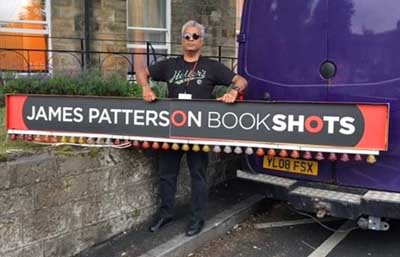
Pip! Pip!
The Ripster
|